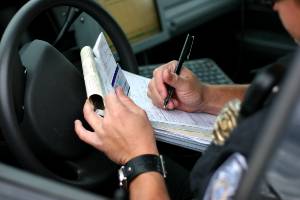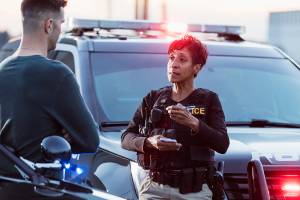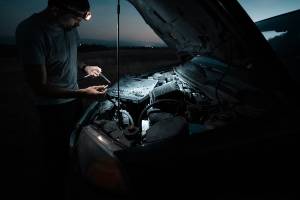Filing a Car Crash Lawsuit After Receiving a Traffic Citation
 Unfortunately, many people hold a variety of misconceptions about seeking compensation after a car crash. People may even be discouraged from pursuing compensation because they think it will be too difficult or complicated, particularly if they are partially at fault.
Unfortunately, many people hold a variety of misconceptions about seeking compensation after a car crash. People may even be discouraged from pursuing compensation because they think it will be too difficult or complicated, particularly if they are partially at fault.
However, it is never a bad idea to call an experienced lawyer to discuss the situation. You could still be able to seek compensation, even if you received a citation from the police officer at the scene.
Below, learn more about the types of traffic citations often given out after a car crash and how they may impact your claim for compensation. If you have questions about the legal process, you can call TSR Injury Law for help.
No-Fault Insurance Coverage
It is important to note Minnesota is a no-fault state, which means you can file a claim (for medical bills and wage loss) against your personal injury protection (PIP) coverage no matter who is at fault for the crash.
However, if you are injured, you may also want to make a bodily injury claim against the at fault driver’s insurance. This is especially true when a crash results in severe injuries and your damages may easily exceed your PIP limits. Fault does matter when making a bodily injury claim.
If fault must be considered, things like traffic citations may be used against you by the insurance company. They may claim a citation for some minor offense indicates carelessness on your part. The insurance company may try to exaggerate your amount of fault to lower the value of your claim.
Common Traffic Citations for Crash Victims
While the other driver may bear most of the fault for your crash and receive a traffic citation, victims could also be ticketed. Sometimes these citations are for minor infractions that had nothing to do with the crash itself.
For example, you may be ticketed for not wearing your seat belt. Not wearing a seat belt could dramatically increase your risk of serious injury in a crash. That is why many states have seat belt laws – in Minnesota, not wearing a seat belt is a primary offense and you could be ticketed and fined $25, but it cannot be used against you in a civil injury claim.
You might also be ticketed for having a broken headlight, even though this is unrelated to the crash. The broken headlight did not cause the bad driver to rear-end you, so while it may matter for a criminal ticket, it does not for the civil injury claim.
The insurance company may try to use these tickets against you, and that is why you should strongly consider hiring a Bloomington-based auto accident lawyer to assist you. The attorneys at our firm know the tricks insurance companies use against crash victims, including arguments they often use to deny or devalue claims.
Tickets for More Serious Offenses
You may be cited for more major infractions after a crash, such as a right-of-way infraction or speeding. No matter who did what, you can always make the pip claim.
However, serious criminal violations can greatly affect the bodily injury claim against the other driver’s insurance. Under Minnesota’s comparative negligence law, you can still recover compensation if you are not more at fault than the other party. In other words, you cannot be more than 50 percent to blame for a crash. Your claim will be reduced by whatever true fault you are assigned. For example, if you are 20 percent at fault for the crash and have $10,000.00 in property damage and $20,000.00 in injuries, the other insurance (who is 80 percent at fault) still owes you $24,000.00.
That means your percentage of fault for the crash is crucial. If you think you are being assigned more fault than you deserve, you should contact a lawyer to advocate for you. Even though the traffic ticket you were given may be valid, the percentage of fault the insurance company is assigning based on that ticket may too high. Insurance companies often argue everyone is 20 percent at fault for just being on the road, so when they see a ticket, the fault blame game only goes up.
Another factor to consider is: was the ticket violation a cause of the crash? If your ticket is for drunk driving or going the wrong way on a road, the crime also matches fault and there will be no injury claim. However, some serious ticket violations are not a “cause” of the crash. Two examples are driving without insurance or without a license. Each of these offenses are illegal and bad, but not having insurance did not cause the other driver to rear-end you. The “crime” of no insurance did not cause the crash and there is no fault that can be fairly assigned to you.
Contesting Tickets
Many people simply pay their traffic tickets and move on. However, it may be possible to contest your ticket. The ticket should say how you can contest it and how much time there is to do so.
It is important to note that if you do contest the ticket, it will be your word against the officer’s. That is why it is important to have witnesses or other evidence (pictures, dash cam footage) to support your argument. If the officer was not at the scene to witness the crash, but an impartial witness was there, he or she may provide the evidence you need to overturn the ticket.
If you successfully contest the ticket, the insurance company will not be able to use it against you, helping to potentially increase the value of your claim.
Injured in a Crash? Call Today for Assistance
Our law firm has been helping crash victims for more than two decades and we have recovered millions on behalf of our clients.
The initial consultation with one of our licensed attorneys is free of charge and comes with no obligation to take legal action. That means there is no risk to you in calling to find out what we may be able to do for you. Unlike the insurance company, our goal is to obtain maximum compensation for your damages to help you move forward.
Call TSR Injury Law today to schedule a free consultation. Phone: (612) TSR-TIME


 We have all seen drivers standing by their wrecked cars surveying the damage or exchanging insurance information. Most drivers passing by are careful to avoid the damaged vehicles.
We have all seen drivers standing by their wrecked cars surveying the damage or exchanging insurance information. Most drivers passing by are careful to avoid the damaged vehicles. If you get a flat tire or something else happens that forces you to pull over, it is very important to get to a safe location away from the flow of traffic. You do not want to be in harm’s way and potentially get hit by a fast-moving car. Not only could your car suffer significant damage in such a crash, but you may suffer severe injuries as well.
If you get a flat tire or something else happens that forces you to pull over, it is very important to get to a safe location away from the flow of traffic. You do not want to be in harm’s way and potentially get hit by a fast-moving car. Not only could your car suffer significant damage in such a crash, but you may suffer severe injuries as well. Winter is almost here, and for some of us that means getting out the snowmobile for some fun in the snow. Unfortunately, when we have fun in our free time, we are often not as focused on safety as we should be. That can lead to risky behavior and some dangerous oversights, such as not wearing a helmet.
Winter is almost here, and for some of us that means getting out the snowmobile for some fun in the snow. Unfortunately, when we have fun in our free time, we are often not as focused on safety as we should be. That can lead to risky behavior and some dangerous oversights, such as not wearing a helmet. Millions of people in Minnesota and throughout the nation struggle with drug and alcohol addiction every year. That is why organizations like Minnesota Adult & Teen Challenge are so important. People need help overcoming addiction and Adult & Teen Challenge has been providing help since 1983.
Millions of people in Minnesota and throughout the nation struggle with drug and alcohol addiction every year. That is why organizations like Minnesota Adult & Teen Challenge are so important. People need help overcoming addiction and Adult & Teen Challenge has been providing help since 1983.